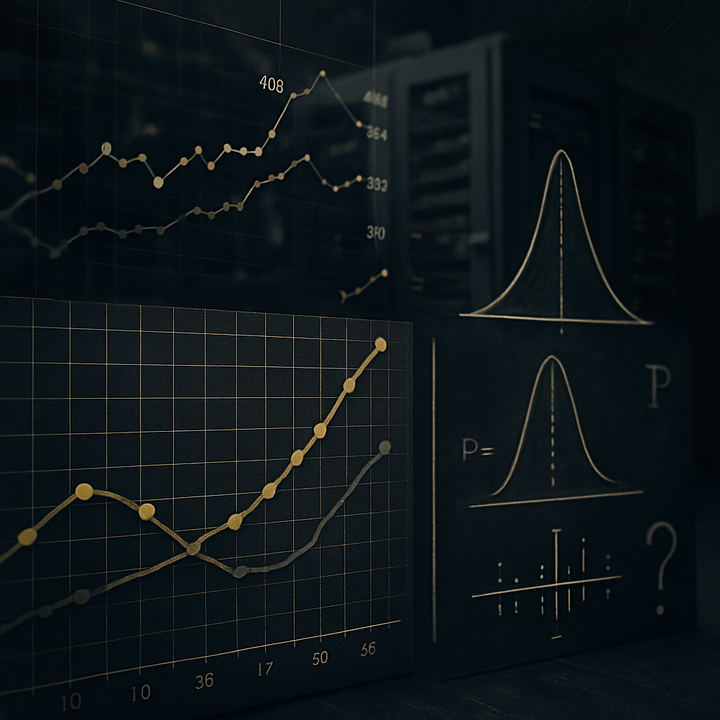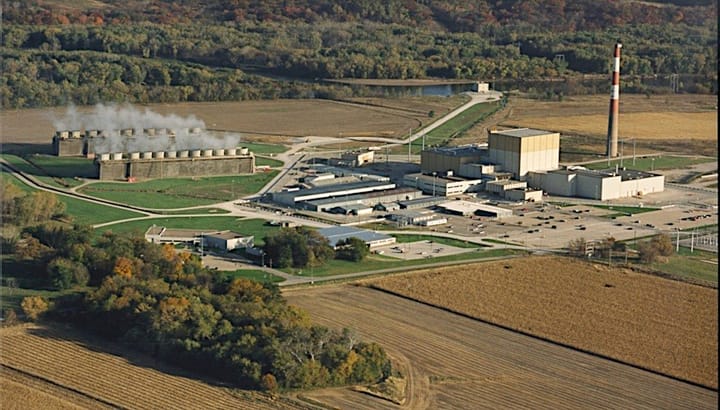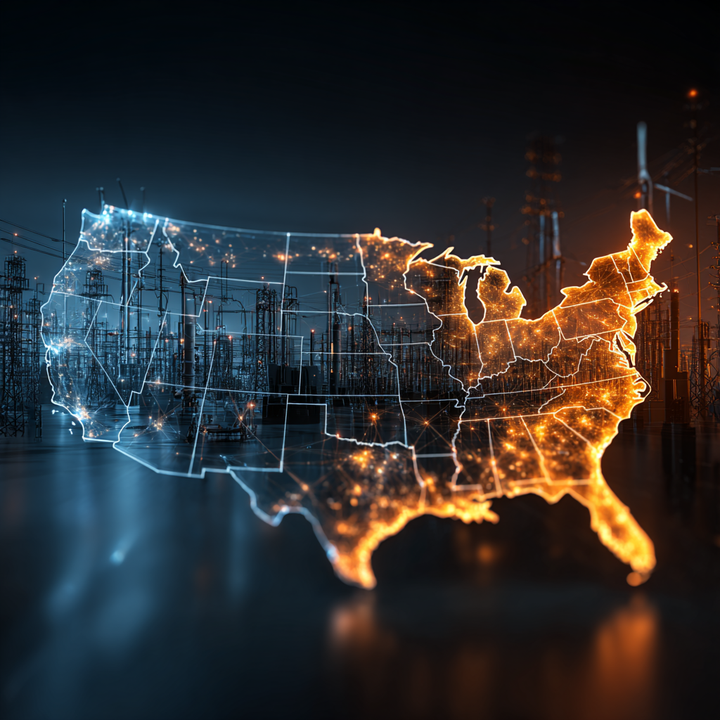AI is transforming the grid from reactive reliability to dynamic intelligence. As demand surges from data centers and electrification, utilities are deploying AI-driven DERMS, VPPs, and predictive systems to create flexible, resilient power networks built for the AI age.
AI is abuzz in the utility industry - and not only because of the surge in power demand from data centers and electrification across the U.S. and abroad. The deeper transformation is systemic: AI is moving the grid from reactive reliability to dynamic intelligence. The shift is no longer “nice-to-have”- it’s the only viable path to serve rising peaks, integrate variable and behind-the-meter resources, and shield customers from climate-driven volatility without overbuilding transmission, distribution, or peaking capacity.
This next phase of grid modernization demands orchestration, beyond the current planned addition. The new control architecture- spanning Distributed Energy Resource Management Systems (DERMS), Virtual Power Plants (VPPs), AI-driven asset management, predictive outage restoration, and customer-centric load flexibility- is the connective tissue of a modern, responsive power system. But these technologies only reach full potential when stitched together by market access, data governance, and regulatory alignment under frameworks like FERC Order 2222.
The AI Imperative
U.S. peak demand is climbing, driven by data centers, electrification, and extreme weather. The U.S. Department of Energy’s Pathways to Commercial Liftoff calls for deploying roughly 80–160 GW of VPPs by 2030—- effectively a fast, modular alternative to some traditional capacity additions. The 2025 update underscores that peak demand could rise from ~800 GW in 2024 to ~900 GW by 2030, intensifying the need for flexible capacity.
At the same time, FERC Order 2222 opens wholesale markets to aggregated DER- rooftop solar, batteries, EVs, and smart devices- turning previously passive load into dispatchable grid resources. This is a regulatory unlock for value stacking at scale and will yield market disrupters as well as opportunities for traditional business models like regulated utilities.
Think of Advanced Distribution Management Systems (ADMS) as the utility’s real‑time air traffic control for the distribution system- switching, voltage/VAR optimization, outage restoration. DERMS specializes in orchestrating fast, granular, often customer‑owned resources at the grid edge. In practice, the two should interoperate tightly: ADMS ensures system safety and topology‑aware constraints; DERMS dispatches fleets of behind‑the‑meter assets to meet grid and market objectives.
Utilities are already using advanced Outage Management Systems (OMS)/ADMS with predictive analytics for faster restoration and better crew guidance. Leading OEM offerings (such as that of GE Vernova) highlight fault location, damage assessment, and decision support capabilities that shorten SAIDI/SAIFI and improve CEMI, critical outcomes for the performance of the grid.
VPPs are Real—and Scaling Quickly
In California, the Demand Side Grid Support (DSGS) program shows what’s possible when customer assets are aggregated with market signals. During a July 2025 event, more than 100,000 home batteries delivered ~500–535 MW to the system - the equivalent of a mid‑size power plant mobilized from rooftops. Independent analysis suggests statewide VPPs could save Californians roughly $550 million per year by 2035 and avoid more than $750 million annually in traditional system costs. With rising costs of electricity across the U.S., these solutions can deliver meaningful savings to consumers and businesses.
DOE’s Liftoff work quantifies national potential, while recent policy debates (e.g., California vetoes) underscore that regulatory alignment matters as much as technology. The opportunity is very real; the main barriers are effective policy design, appropriate cost allocation, and market effectiveness.
AI for Outage Prediction and Restoration
AI is no longer a lab demo for predictive analytics. Utilities are marrying dense weather data, LiDAR/imagery, and asset histories to predict where and when faults will occur- enabling pre‑positioning of crews, staging of materials, and prioritization of circuits before the first call comes in. Public examples include PG&E’s enhanced outage prediction models that combine thousands of weather stations with AI/ML, and utilities reporting >80% accuracy in predicting storm‑driven component failures in some use cases. Duke Energy has invested heavily in self‑healing and analytics that avoid or shorten millions of customer interruptions.
Vegetation management - a leading cause of outages and wildfire risk- is also becoming data‑driven. Using data to be targeted in utilizing limited O&M dollars in the right places can make a huge difference in outage restoration times and reducing overall risk of the system. EPRI’s maturity framework outlines a progression from patrol‑based cycles to remote sensing, risk‑based targeting, and AI‑assisted prioritization.
Customer Load Management = Flexible Capacity
DOE’s Grid‑interactive Efficient Buildings (GEB) initiative formalizes the value: buildings can be flexible grid assets when equipped with controls, automation, and time‑varying rates. The roadmap aims to triple energy efficiency and demand flexibility in buildings by 2030 versus 2020 levels - driving both affordability and reliability.
That flexibility is the fuel for AI‑driven VPPs. Brattle’s analyses of California’s programs show substantial net savings and reliability benefits when customer devices (batteries, thermostats, EVs) respond to peak events. The lesson for other states: align incentives, simplify enrollment, ensure devices can be orchestrated across programs, and pay for performance.
A Roadmap to the Intelligent Utility
- Establish a baseline system‑wide data strategy. Build a unified data fabric across AMI, SCADA, OT, GIS, weather, imagery, and markets. Govern metadata, quality, lineage, and cyber posture from day one. Prioritize features that materially improve reliability and economics (e.g., topology‑aware forecasts, locational hosting capacity, feeder‑level net‑load prediction). NREL’s DERMS/ADMS research points to observability as the first constraint to remove.
- Integrate ADMS and DERMS with clear control authority. Define who does what, when—with ADMS as system‑safety authority and DERMS as the optimizer of DER fleets within network limits. Use standard interfaces and joint testbeds; stage rollout feeder‑by‑feeder with digital twins to validate dispatch under contingencies. OEM platforms and NREL guidance can provide reference architectures.
- Operationalize AI for resilience - not dashboards. Move beyond pilots by embedding outage prediction into crew scheduling, spares logistics, and vegetation work orders with service‑level agreements. Monitor model drift and false‑positive/negative costs, and ensure interpretability and audit trails for safety‑critical calls. Utilities and industry groups are publishing pragmatic playbooks for doing this safely.
- Stand up market participation under FERC 2222. Build or partner for aggregation capabilities, telemetry, baselines, and settlement. Start with one ISO/RTO and two or three homogenous device types to learn fast. FERC’s rule provides the legal runway; the task is aligning interconnection, metering, and distribution‑level review so VPP dispatch doesn’t create local violations.
- Scale customer programs that pay for flexibility. Pair time‑of‑use/critical‑peak pricing with automated device control. Offer simple “good‑better‑best” enrollment (e.g., thermostat only; thermostat + EV; thermostat + EV + battery). Use pay‑for‑performance to ensure resources deliver when called. California’s results indicate what’s possible even as program design evolves.
- Measure what matters. Keep leading and lagging metrics few and relevant. Track avoided peak MW; event performance (availability, response time, persistence); system reliability (SAIDI/SAIFI/CEMI); and customer NPS by program. Tie internal incentives to both grid and customer outcomes so flexibility doesn’t become one‑way extraction.
- Talent, change, and partners. Upskill grid operators and planners on probabilistic thinking and AI‑assisted workflows; recruit DER/VPP product managers who think like both system operators and marketers. Where appropriate, partner with OEMs and aggregators to accelerate time‑to‑value rather than building everything in‑house.
What Good Looks Like in 24 Months
- VPPs as first responders: 2–3% of system peak under contract via residential/commercial portfolios with verified delivery in extreme heat or cold.
- AI‑assisted restoration: Pre‑storm staging guided by model outputs; measurable reductions in outage minutes and faster Estimated Restoration Time (ERT) accuracy.
- Tight ADMS↔DERMS loop: Location‑aware dispatch that respects feeder constraints, coupled with automated voltage support from inverters during events.
- Customer value unlocked: Clear bill savings and incentive pathways; simple enrollment; transparent privacy and cybersecurity posture to build trust.
The Bottom Line
Huge capital investments are planned to address the access, reliability, and resilience needs of the future grid. To be clear, AI, DERMS, and VPPs don’t replace wires or new generation. They buy time and optionality while we build the right new systems. The intelligent utility of the future is orchestrated, data-driven, and customer-powered. If we integrate the control stack, operationalize AI for resilience, and pay customers for flexibility—under the market access FERC 2222 enables - we can meet peak reliably and affordably, even as demand grows.
The industry doesn’t need more pilots- it needs precision at scale. The next decade will reward those who operationalize intelligence, not just instrument it. The grid we build now will determine whether reliability becomes a constraint—-or our greatest competitive advantage.
AIxEnergy article author Hannah Kaplan is a senior energy executive and AI strategist with over 17 years of experience at General Electric, Honeywell, and Entergy. She builds organizations at the intersection of technology, markets, and human connection. Having lived in seven countries and visited over 120, she brings a global perspective to the future of energy and intelligence.



